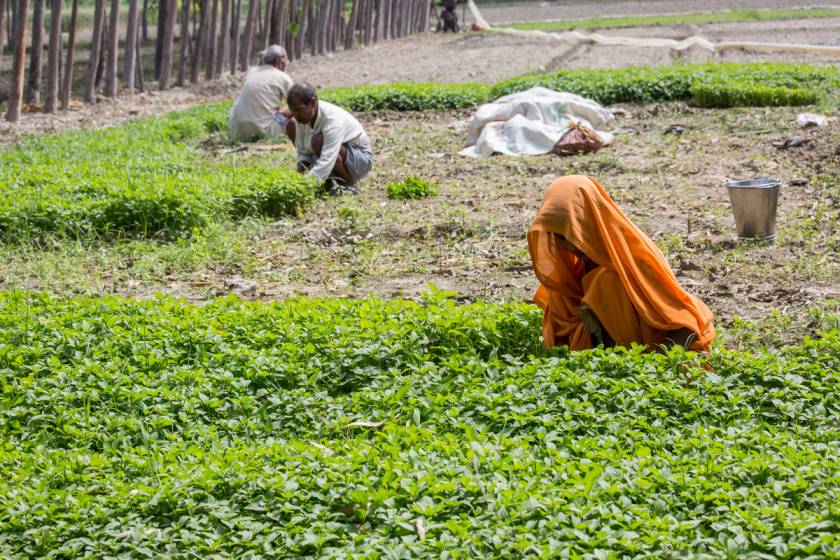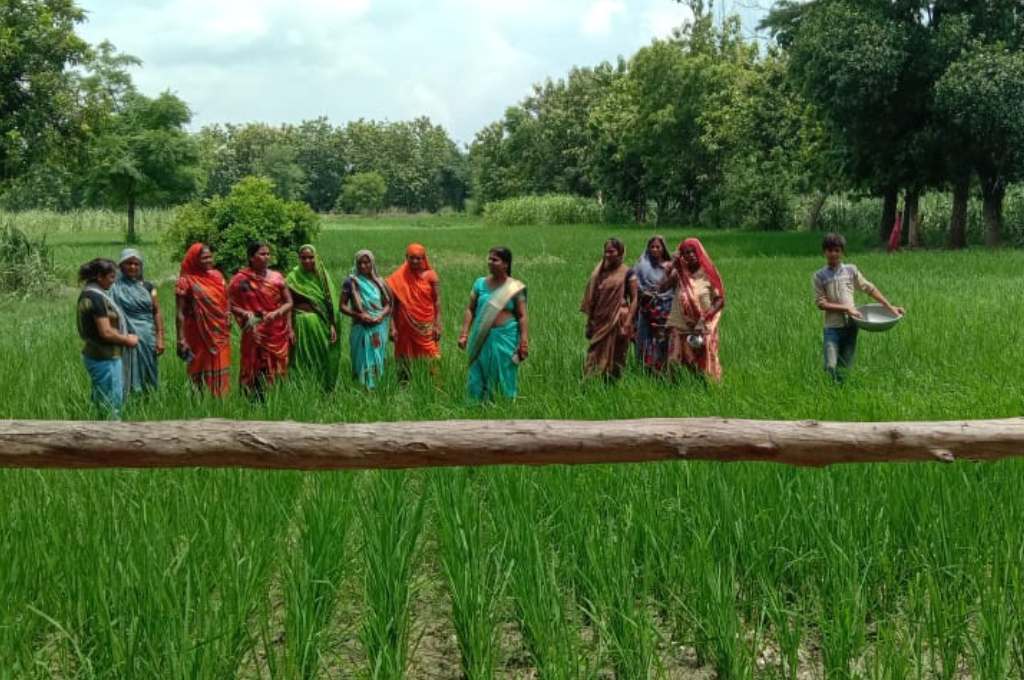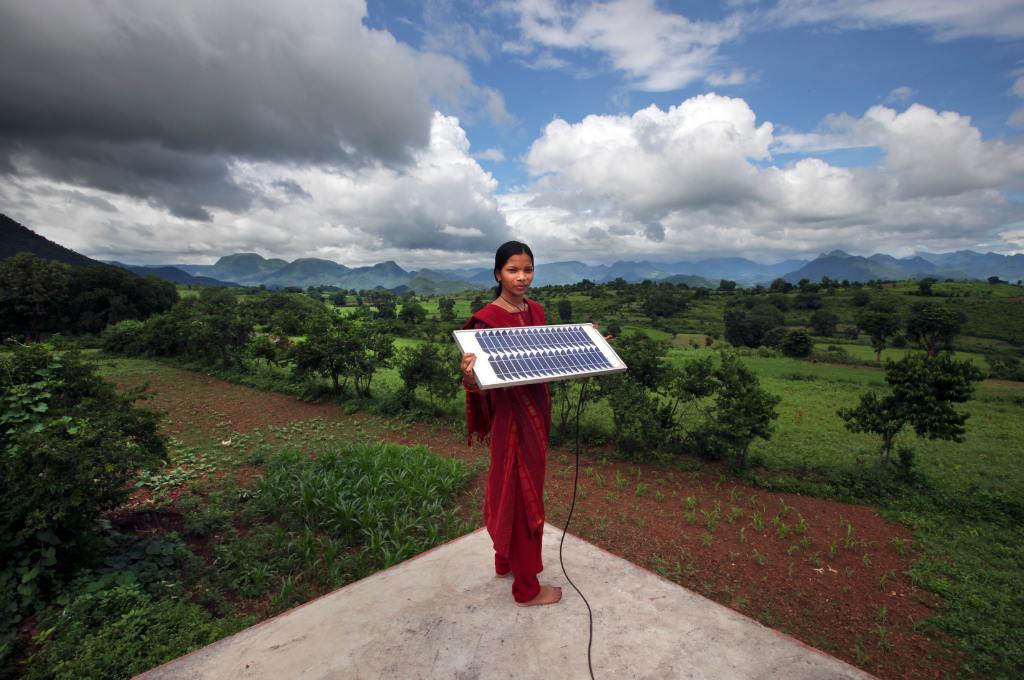Generally speaking, the term feminisation is used to refer to the increasing participation of women in an activity. With regard to employment, the term can be used to denote feminisation of a particular sector or industry where there is a disproportionate concentration of women; for instance, in the service industry, agriculture, or the garment industry.
It should be noted that feminisation of labour may also be restricted to certain specific roles and tasks in each of these cases. For instance, in the service industry, house maids and babysitters are typically women; in agriculture, paddy transplantation is exclusively done by women; and in the Indian garment industry, home-based workers are mostly women.
The Government of India in the Economic Survey (2017-2018) stated that the agricultural sector in India is undergoing feminisation. In the face of shrinking employment opportunities in agriculture, men diversified into the rural non-farm sector, and male out-migration emerged as a major livelihood strategy. Since women did not feature predominantly in either of these trends, most rural women are still engaged in agriculture, mostly as labourers and cultivators (with a disproportionate number of agricultural labourers being Dalit women).
Related article: Where is the money for women farmers?
What led to this feminisation of agriculture?
One reason for the feminisation of agricultural labour is that capital prefers to employ women. Women are more willing to accept low-paid irregular work, are easy to hire and fire, are thought to be docile and hardworking, and certain jobs are typified as women’s work. All these factors combined with gendered division of work are an important explanation for feminisation. Together, they keep production costs in check and enable capital accumulation.
Against the backdrop of rural distress and agrarian crisis,1 rural men sought employment outside agriculture. Inside villages, they took to non-farm work as casual labourers in construction, brick kilns, mills, or worked as drivers, carpenters, teachers, and so on. An important point to note here is that such jobs, while more readily available and better remunerated than agricultural labour, are socially perceived as ‘male work’. Many of these jobs are better paid, more esteemed, and involve arduous physical labour.
The participation of women in the rural, non-farm economy is few and far between, and depends on local socio-cultural value systems. In this context, women often remain in the villages, and therefore in agricultural work. At best, they are supplementary income earners; the concept of a ‘breadwinner’ is strongly associated with men.
In line with patriarchal social roles, women are responsible for reproduction and care activities. With male out-migration, women have additionally taken on the role of providing for their households on a daily basis, since remittances are irregular. This means that they now have to take care of their own farming and also work as agricultural wage labourers.
Within agriculture, there exists a gendered division of labour. Women undertake work such as weeding, threshing, and paddy transplantation—tasks that might not require physical strength. Patriarchy is so deeply rooted that even though women might do male tasks like ploughing and spade work in their own fields, they might not as wage labourers. A woman doing a ‘man’s job’ would most likely invite ridicule.

Farm jobs keep women confined to low paid, insecure, and oppressive labour relations. | Picture courtesy: ©Bill & Melinda Gates Foundation/Prashant Panjiar
Men’s freedom is built on women’s unfree labour
Unfree labour essentially refers to types of exploitative labour relations, involving the use of coercion or compulsion to extract labour from workers. It is especially pervasive in labour-intensive activities like those found within agriculture, construction, and some forms of manufacturing.
Feminisation of agriculture is also linked to women’s unfree labour, and it is precisely this unfreedom on the backs of which men’s freedom is built—to migrate, to engage in comparatively better jobs, to escape social discrimination in the villages.
Feminisation of agriculture is also linked to women’s unfree labour, and it is precisely this unfreedom on the backs of which men’s freedom is built.
Consider this example: when migrating, men often borrow money for their initial expenses in the city. The sources of credit are informal—primarily the landed elite who are also the main source of agricultural employment. In return, women from these indebted households provide priority or tied labour services to their creditor households. What this means is that during peak agricultural season, for example, women are obligated to first work in the fields of their creditors. They may be paid wages lower than the market rate, wages may be delayed, or only paid partially. They may be called up by such households to tend to the livestock, to wash and dry grains, to wash utensils, sweep the courtyard, and so on.
Often, women have to take permission from their creditor households to take up other agricultural wage work, and this permission may be denied in the case of those households which are in social, economic, or political competition with their creditor households.
Apart from socio-cultural patriarchal norms that restrict their movement, such unfree labour relations also prevent these women labourers from seeking better agricultural wage work, especially during the peak season when high demand increases their wage bargaining power. Women may also provide such unfree labour willingly because in the absence of state-driven social protection and their male relatives, they may be dependent on these creditor households for meeting their everyday needs—health, education, food, and farming expenses.
Related article: Recognising women as farmers
So, what are the implications of this feminisation?
Feminisation does bring women into the public sphere. It does make their labour visible and accounted for (though this is not always the case), and feminisation can potentially lead to building women’s skills and confidence, give them an opportunity to organise, and enhance their bargaining power.
The government has also acknowledged the need for pro-women farmer policies with respect to land, water, credit, technology, and training. This is indeed a laudable goal, and if appropriate policies are designed and implemented, they can lead to better well-being and empowerment outcomes for rural women. Kudumbashree—a poverty eradication and women empowerment programme in Kerala—is one such example.
Civil society can also play an important role in organising agrarian women into collectives, educating them about their rights, enabling access to the state, and giving them sustainable livelihood training. This can be seen in the work of Deccan Development Society in Telangana, or Musahar Manch and ActionAid in some districts of eastern Uttar Pradesh, for example.
The inclusion of women in labour markets has taken place under very adverse conditions.
But when one talks of feminisation, one needs to be cautious. The inclusion of women in labour markets has taken place under very adverse conditions. Bearing a greater burden of responsibility has not translated into decision-making powers over important issues such as property or marriage. Nor have property rights been vested in women though they are the actual cultivators.
Women tend to undertake the least paid and most menial agricultural tasks. At times, women’s work is treated as nothing more than an extension of household work, as ‘time pass’, and not as something value-generating. For example, women are responsible for livestock rearing, or making milk products. But because the men sell these products in the market, they get recognition and income. Ultimately, farm jobs keep women confined to low paid, insecure, and oppressive labour relations.
It does not make sense to focus on making policies for farmers more women-centric because the reality is that many women are not officially recognised as farmers; and therefore, will continue to be excluded from various government schemes. The key ingredient to checking the marginalisation of rural women engaged in agriculture is sustained political commitment and effective policy design.
- Mehrotra, Ishita. 2017. ‘Subsidising Capitalism and Male Labour: The Scandal of Unfree Dalit Female Labour Relations’. In: Anandi, S., Kapadia, Karin (eds.) Dalit Women: Vanguard of an Alternative Politics in India. London: Routledge.
—
Know more
- Watch Pradnya Jayant Bapat, a farmer from Yavatmal, Maharashtra, talk about the challenges she faces as a woman in agriculture.
- Read this article on IndiaSpend, which examines how women are the first to lose out when rural jobs disappear.
- Learn about the political economy of feminisation and the gendered discourse of work from this research paper.
Do more
- Visit and explore platforms such as People’s Archive of Rural India (PARI), that amplify rural women’s voices.




